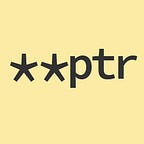Top 10 Interview Questions for Salesforce Lightning Developer
1. What is Salesforce Lightning?
Don’t forget to get your copy of Designing Data Intensive Applications, the single most important book to read for system design interview prep!
Salesforce Lightning is a component-based framework that is designed to simplify the app development process for business users who do not have much programming knowledge. It includes the Lightning Component Framework, which is a UI framework that helps create dynamic web applications for both mobile and desktop devices. It enhances the user experience by offering an optimized and faster platform compared to the Salesforce Classic.
Consider ByteByteGo’s popular System Design Interview Course for your next interview!
2. What are Lightning Components?
_________
Land a higher salary with Grokking Comp Negotiation in Tech.
Lightning Components are reusable, self-contained units of an application that represent part of the UI. They follow a component-based architecture where developers can build applications using independent components that work together seamlessly. Each component contains a combination of HTML, JavaScript, and CSS, making it easier to develop custom solutions on the Salesforce platform.
3. How is Lightning different from Salesforce Classic?
_________
Don’t waste hours on Leetcode. Learn patterns with the course Grokking the Coding Interview: Patterns for Coding Questions.
The key difference between Lightning and Salesforce Classic is the user interface and development approach. Lightning offers a more modern, responsive design and is optimized for mobile and desktop, while Salesforce Classic uses a more traditional and less flexible interface. In addition, Lightning supports component-based development, improving efficiency and customization for developers compared to the page-centric development in Classic.
4. What is the use of Lightning App Builder?
_________
Get a leg up on your competition with the Grokking the Advanced System Design Interview course and land that dream job!
The Lightning App Builder is a drag-and-drop tool that allows developers and administrators to build custom pages for Salesforce Lightning Experience and mobile apps. It provides a user-friendly interface where users can easily drag Lightning Components onto the page and customize layouts without needing to write code. This tool enhances productivity and allows non-developers to customize their Salesforce instance efficiently.
5. Explain the difference between Aura Components and Lightning Web Components (LWC).
_________
Land a higher salary with Grokking Comp Negotiation in Tech.
Aura Components and Lightning Web Components (LWC) are both used for building Lightning applications, but they differ in their underlying frameworks. Aura Components follow a proprietary Salesforce framework and require a significant amount of boilerplate code. In contrast, LWC is built on modern web standards, leveraging native browser capabilities, which results in a more efficient, lightweight, and fast development experience. LWC has become the preferred method for building Salesforce Lightning applications due to its simplicity and performance.
6. What is the Lightning Data Service (LDS)?
_________
Get a leg up on your competition with the Grokking the Advanced System Design Interview course and land that dream job!
The Lightning Data Service (LDS) is a standard way to interact with Salesforce data without writing Apex code. LDS is similar to Visualforce’s standard controllers, allowing you to perform CRUD operations (Create, Read, Update, Delete) with Salesforce objects and records. It simplifies development by handling server-side operations like data caching and error handling automatically, thus improving performance and reducing the need for custom controllers or server calls.
7. How do you handle events in Salesforce Lightning Components?
_________
Don’t waste hours on Leetcode. Learn patterns with the course Grokking the Coding Interview: Patterns for Coding Questions.
Salesforce Lightning Components use an event-driven architecture to handle communication between components. There are two main types of events in the Aura Component framework: Component Events and Application Events. Component Events are used for communication between components that are closely related, while Application Events allow communication across different components, regardless of their relationship. Developers can define and fire events using the ` ` tag and handle them within components using the `register` and `handler` tags.
8. How do you optimize the performance of Lightning Components?
_________
Don’t waste hours on Leetcode. Learn patterns with the course Grokking the Coding Interview: Patterns for Coding Questions.
To optimize the performance of Lightning Components, developers should minimize server calls by using Lightning Data Service (LDS), avoid unnecessary re-rendering by using `aura:if`, reduce component complexity, and cache data where appropriate. Another key optimization technique is lazy loading, which loads only the components or data that are immediately needed, deferring other operations to when they are required. Leveraging Lightning Web Components (LWC) also inherently improves performance due to its reliance on modern web standards.
9. What is the role of Lightning Design System (SLDS)?
_________
Get a leg up on your competition with the Grokking the Advanced System Design Interview course and land that dream job!
Salesforce Lightning Design System (SLDS) provides a comprehensive set of design guidelines, CSS, and pre-built components that developers can use to create a consistent and responsive user interface for their Lightning applications. SLDS is similar to other design frameworks like Bootstrap, but it is tailored specifically for Salesforce. By following SLDS, developers ensure that their applications have a unified look and feel that aligns with Salesforce’s native Lightning experience.
10. How can you integrate Lightning Components with external systems?
_________
Land a higher salary with Grokking Comp Negotiation in Tech.
Lightning Components can be integrated with external systems using various methods such as REST API calls, SOAP API, and the use of third-party libraries. Salesforce provides built-in support for making HTTP requests from within Lightning Components using the `Apex` controller or directly from JavaScript. Additionally, you can use platform events, named credentials, and OAuth to securely interact with external systems while maintaining proper authentication and authorization protocols.
By preparing answers to these top 10 Salesforce Lightning Developer interview questions, you’ll increase your chances of landing your dream job. Be sure to highlight your hands-on experience and in-depth knowledge of Salesforce Lightning features during the interview!
